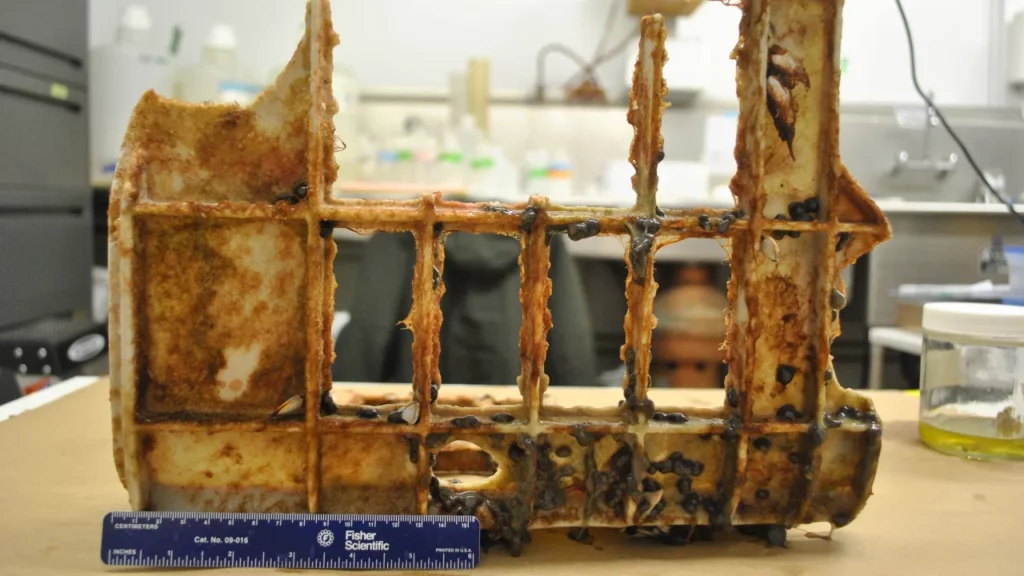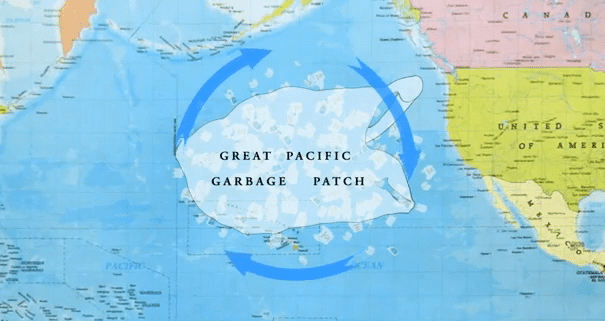The Great Pacific Garbage Patch is not just an 80,000-ton cloud of plastic and trash that floats in the vast expanse of the open ocean, situated over a thousand miles away from land. It has also become an ecosystem that provides a habitat for various sea creatures, from worms to anemones, that latch onto the garbage, a new study found.

A team of biologists fished out toothbrushes, broken glass, and rope covered with gooseneck barnacles and shiny jet-black sea anemones that looked like buttons. In total, they found almost 500 marine invertebrates from over 45 different species that were attached to the debris. This challenges the scientific understanding on coastal species.
“It was surprising to see how frequent the coastal species were. They were on 70% of the debris that we found,” lead author Linsey Haram, a National Institute of Food and Agriculture science fellow, told CNN. “It’s hard to know exactly what’s going on but we have seen evidence of some of the coastal anemones eating open ocean species.”
A surprising finding
The Great Pacific Garbage Patch is the biggest accumulation of ocean plastic in the world – covering an area twice the size of Texas. It’s enclosed by a massive gyre, the largest of five rotating circular currents found in the world’s oceans. These gyres draw in litter towards their center, where it becomes trapped and forms a swirling vortex of trash.
The Ocean Cleanup, an NGO that develops technology to extract plastic from the ocean, estimates there are 1.8 trillion pieces of plastic in the patch that weigh about 80,000 tons. Most of the plastic comes from the fishing industry, the NGO said, while between 10% and 20% of the total can be traced back to the 2011 tsunami that struck Japan.

For their study, Haram and her colleagues partnered up with The Ocean Cleanup to collect over 100 pieces of plastic from the Great Pacific Garbage Patch between November 2018 and January 2019. They found a total of 484 invertebrate organisms that represent 46 different species. Of these, 80% were typically found in coastal waters.
Scientists had long thought that coastal species couldn’t live long-term out at sea due to differences in temperature, salinity, and available nutrients. But the 2011 tsunami in Japan forced us to rethink old assumptions, as identifiable trash from Japan started appearing in places like Hawaii years later, carrying coastal species that managed to survive.
“They’re having a blast,” study coauthor Matthias Egger, head of environmental and social affairs at The Ocean Cleanup, told The Wall Street Journal of the coastal species living on the trash. “That’s really a shift in the scientific understanding.”
Scientists have warned there’s a rapid increase in ocean plastic pollution. To address this, Ocean Cleanup has built a trash-collecting system that collects plastics as they float by. But this is only part of the solution, and without policy action, the rate at which plastics enter the oceans could increase by around 2.6 by 2040, according to a recent study.
Countries at the United Nations agreed last year to end plastic pollution and create a global plastic pollution treaty by 2024. This would be a legally binding agreement to address the full cycle of plastic, from production to disposal. As that happens, many governments are already acting by banning the use of single-use plastics in their territory.
Still, the world produces some 391 million metric tons of plastic every year, much of which ends up in the oceans, where it is unaccounted for. According to one study, there are over 170 trillion plastic pieces in the oceans already.
The study was published in the journal Nature Ecology & Evolution.




